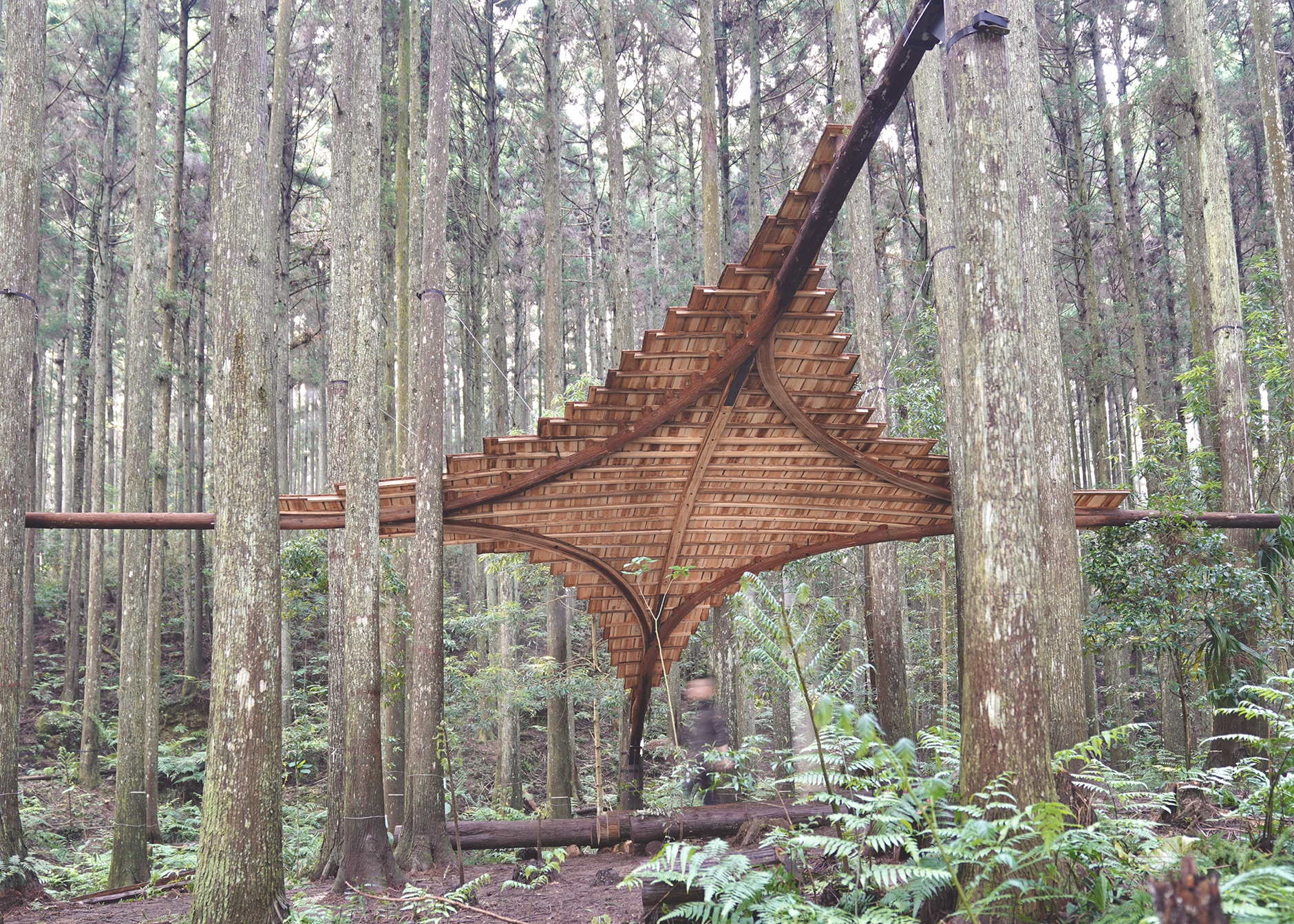
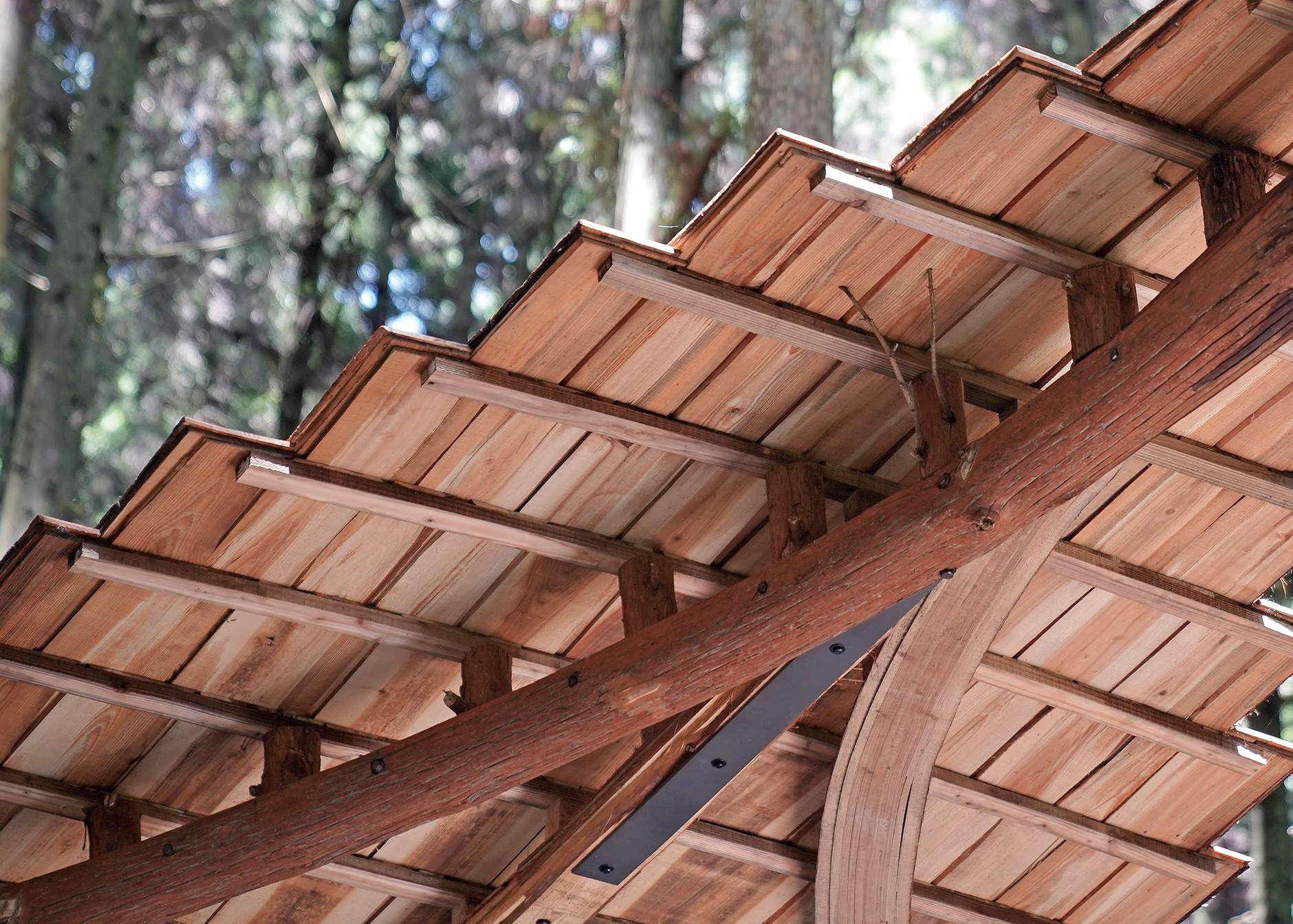
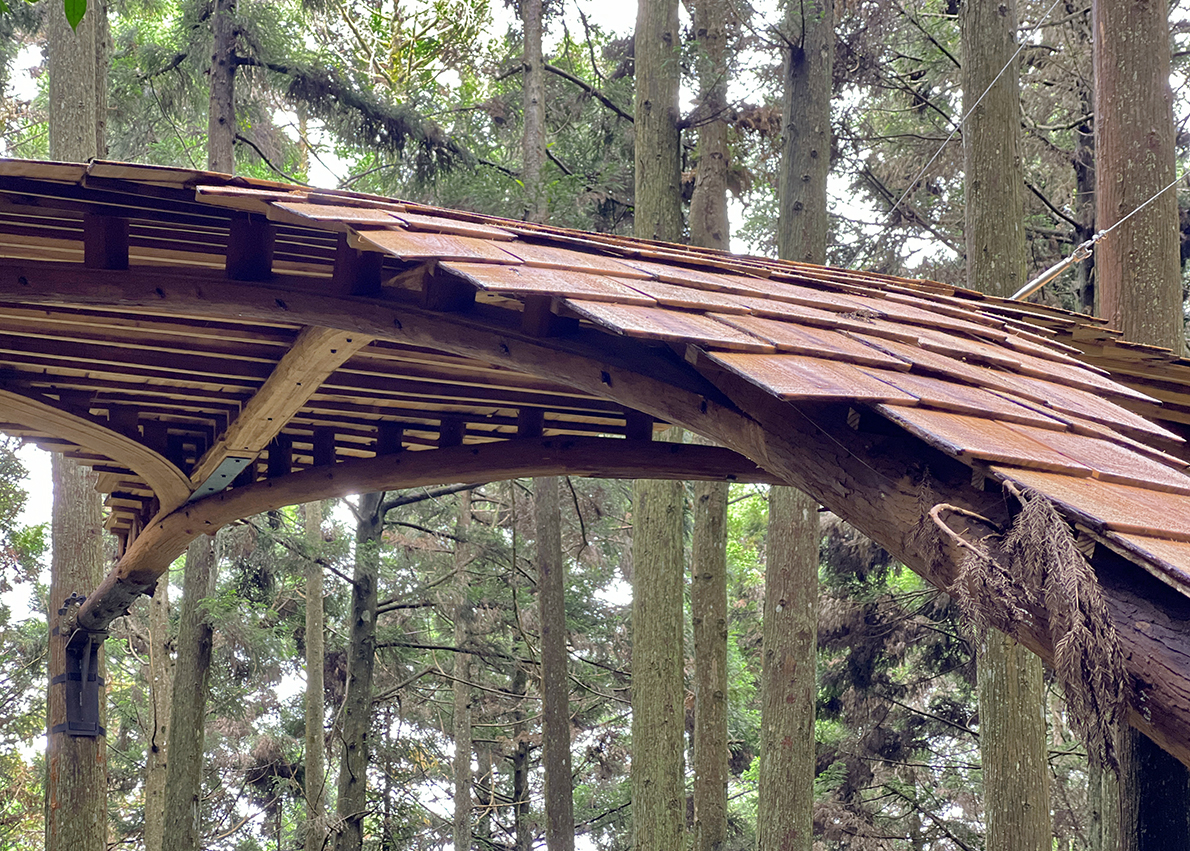
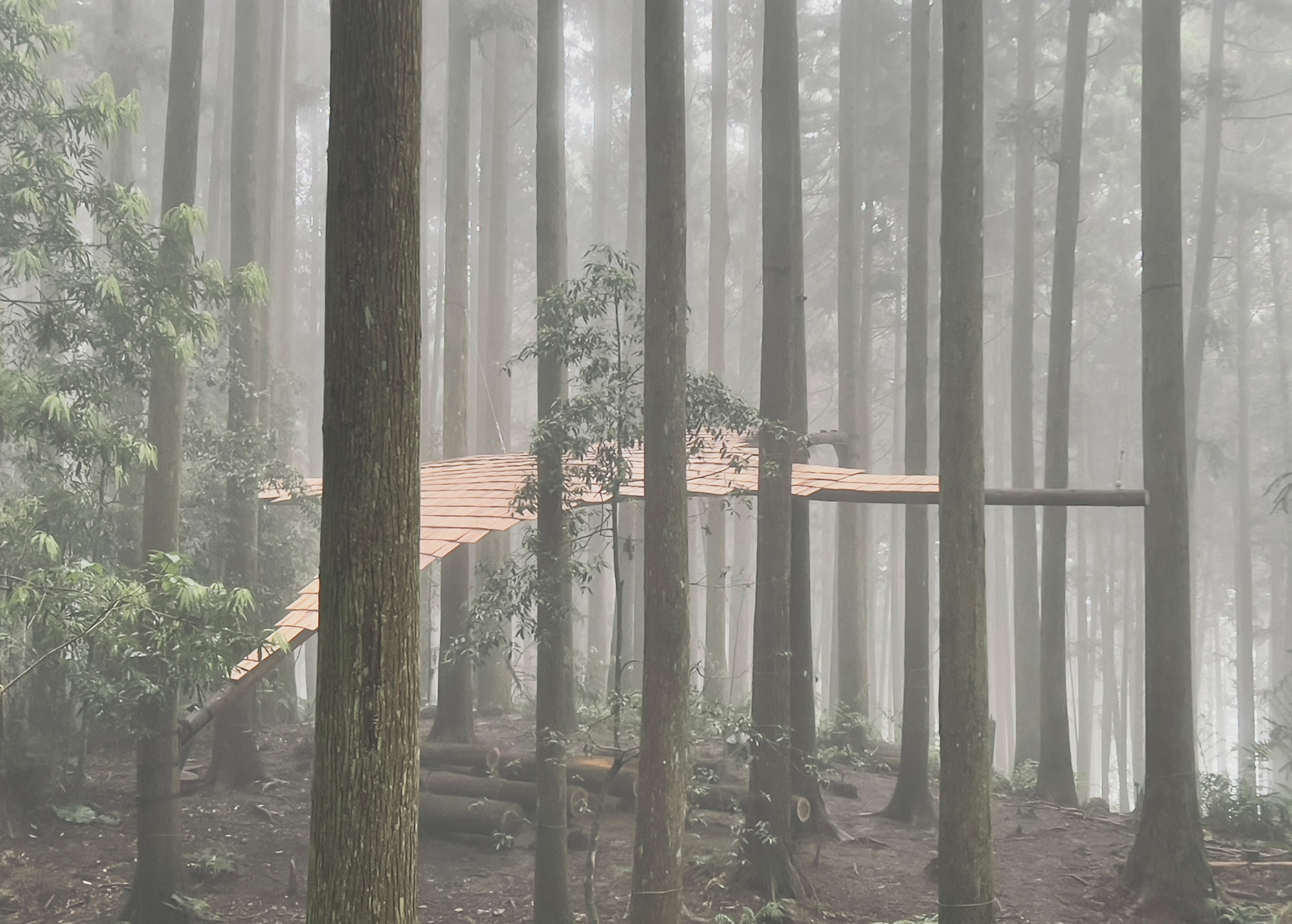
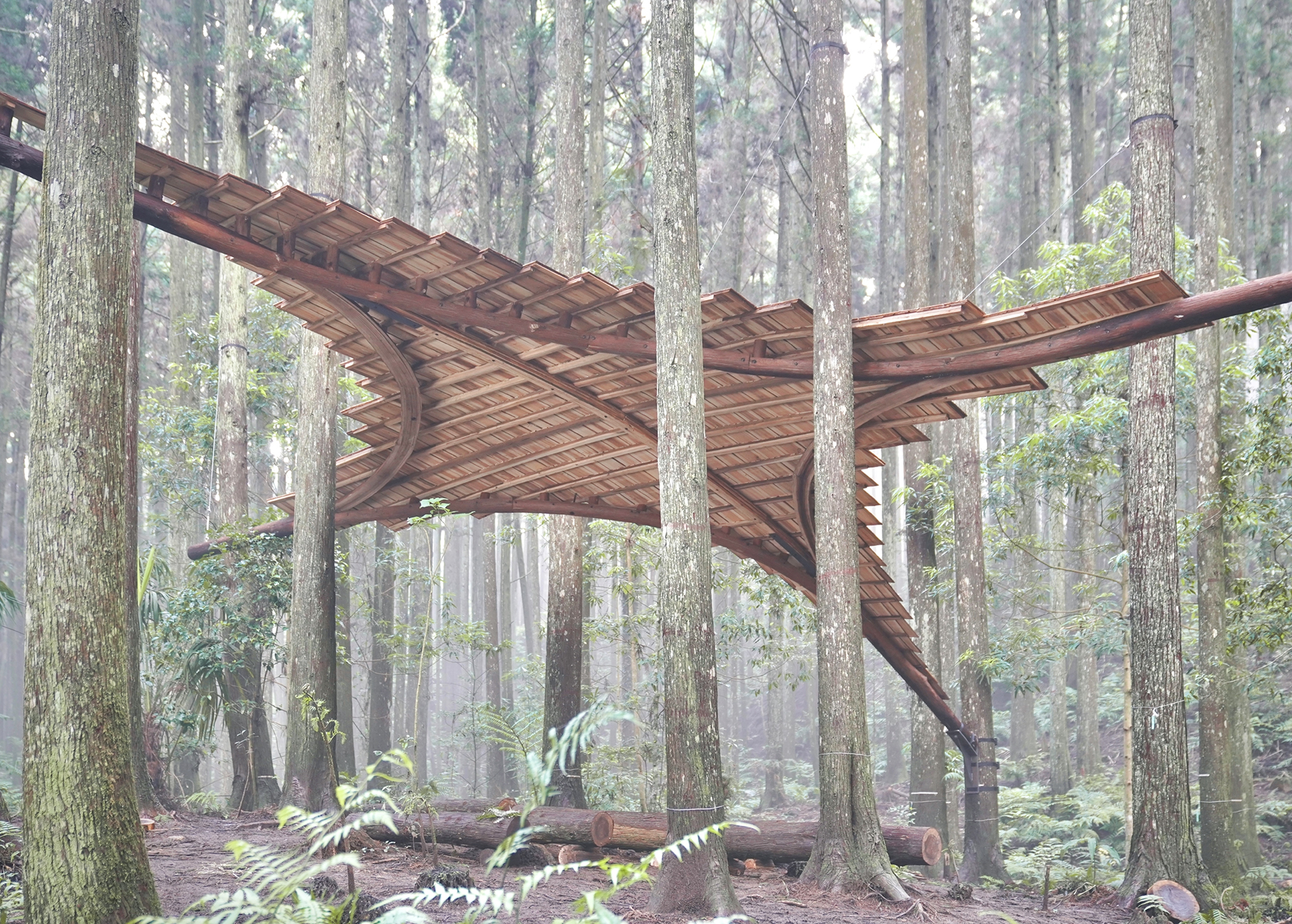 【獎項 Prizes】循環設計獎 Circular Design Award
【獎項 Prizes】循環設計獎 Circular Design Award
【國家或地區 Country / Region】 台灣 Taiwan
【設計團隊 Group / 設計師 Designer】 郭恩愷 NK Kuo
【作品介紹 Description】
《習森》一座向大自然學習的森林風雨教室。
一位自然建築實踐者,獨身住進海拔1,200公尺的林場裏150日,身體力行與森林為伍,從設計到施作,師法自然、親力構築。從杉樹製材到《 習森 》,身體力行與森林為伍,親手打造一座森林風雨教室、一座用雙手思考的自然建築。
在林務局新竹林區管理處帶領「永續林業體驗示範計畫」的實踐下,因而有了森林風雨教室的誕生。《習森》座落於新竹五峰永泰林場,在這片遍植柳杉林一處地勢較為緩和的開闊之處(12x12公尺)作為基地,構築者在林場基地疏伐4棵平均於24公尺、胸幹直徑28公分之半世紀熟齡的柳杉,依樹材特性分成基段、主幹、樹梢段,全幹物盡其用,做為現場建置教室材料。
取其具強韌彈性特質中段主幹8公尺作為主結構材料,於山下製材廠層切,並完成物理乾燥延長木材耐久性工序後,回到林場以『蒸氣彎曲樹』工法製成主構件,於現地收集雨水,煮沸成蒸氣軟化四棵主幹段並趁熱階段彎製成為曲木主結構,型塑成四組直徑8公尺之大型雙弧(Y型)木構件,再分別將四組曲木單元以『指接』工法牽制鎖定,內聚力合而為一座強韌的星芒主體,整座曲木構造由頭尾兩端向內施力因而拱起,使回彈受力支撐共構於基地之東向至西向的兩棵立樹,並將鋼板基座以高噸位綑綁器活動固定於樹徑做為穩定基座。
整座木構雨棚由東西向拱起樑脊,撐起柳杉木基段、樹梢製成的木瓦架構,正面起揚迎向東陽日出,背向下傾使雨水順勢滑落,也讓午後山風西陽吹曬木瓦;而南北向兩末端以鋼索構件制衡、穩定整體木拱支撐系統。
建築過程貫徹友善工法,最低程度介入共築於林,構築全程無使用任何氣槍釘子,取而代之以螺絲、螺栓、綑綁器固定,讓木單元構件皆能100%調整拆卸,實木未來亦可回歸大地的良善循環。
《習森》從一棵森林樹開始談永續設計的精神空間場域,也承載著傳遞臺灣林木環境的教育使命。人工林是世代永續重要的綠色再生資源,同時也傳遞林業、木業、建築環境,密不可分的良善循環。藉由手作教室賦予國產木與建築環境有了革新生命,讓臺灣木材與林業能重新受國人親近、敬重與學習的精神場域,願我們都可以從友善環境的支持者成為實踐者的一份子。
《 Forest-Tree Classroom 》, a sustainable natural building grows from the forestry land.
An architectural maker lived in the woodland for 150 days alone, followed nature, rain and shine, day and night for keeping his regular daily routine and work. Four local cedars were thinned and logged down to allow him to design+build a forestry classroom, thinking about architecture with both hands.
Taking the middle section of cedar as the main structure, the rainwater is collected on the spot for "steam bending tree" to shape four groups of wooden arch members, and a star curved wood main body is restrained and merged by "finger joint", which is applied inward from the front and rear ends. The two standing trees in the east-west direction of the base are supported by force, and the beams and ridges are arched to support the shingle system. The front of the wooden canopy rises to face the sunrise towards the east side, and the back is lowered towards the west to let the rainwater from the roof slide down , and also let the mountain wind blow and dry the shingles in the afternoon.
In the construction process, an eco-friendly construction method is implemented, and the forest is co-constructed with minimal intervention. The components are assembled without chemical corrosion protection, gluing, or any iron nails. Instead, they are fixed with screws, bolts and binding devices, which can be adjusted and replaced in the future, or the wood can be returned to the earth amicably.
Forest-Tree Classroom carries the educational mission from Taiwan's forestry, wood industry to architectural environment. In the era of vigorous development of architecture, the return of material construction method to sustainability is an innovative reflection on the cycle of environmental selection.



